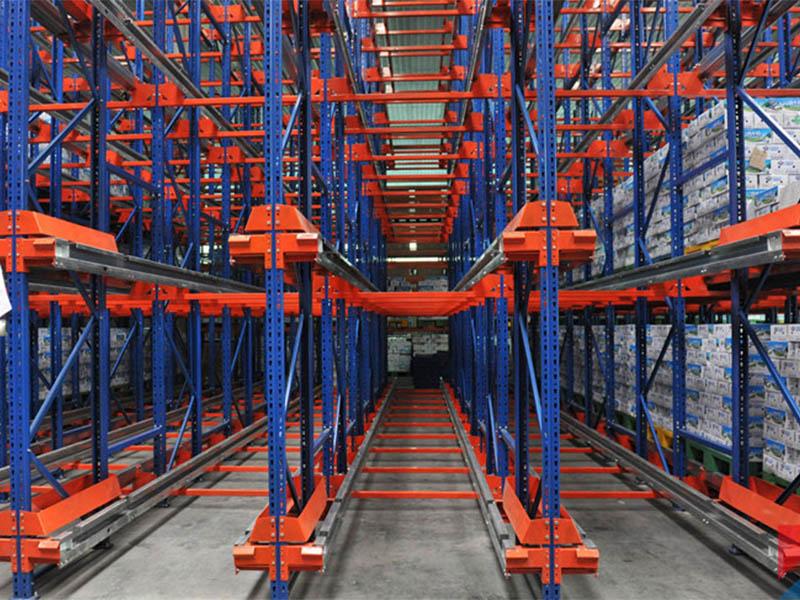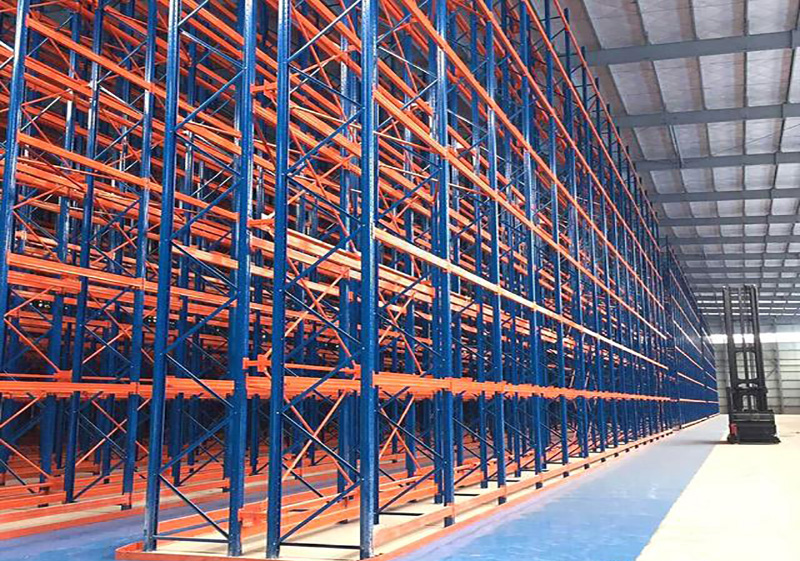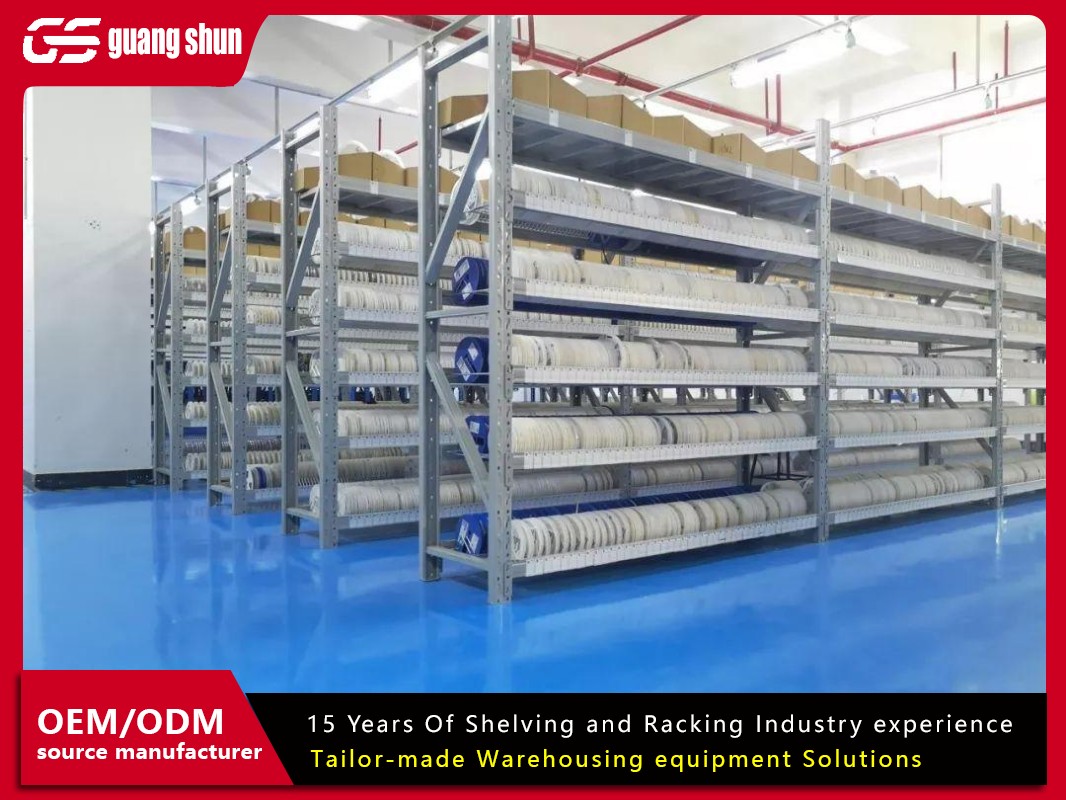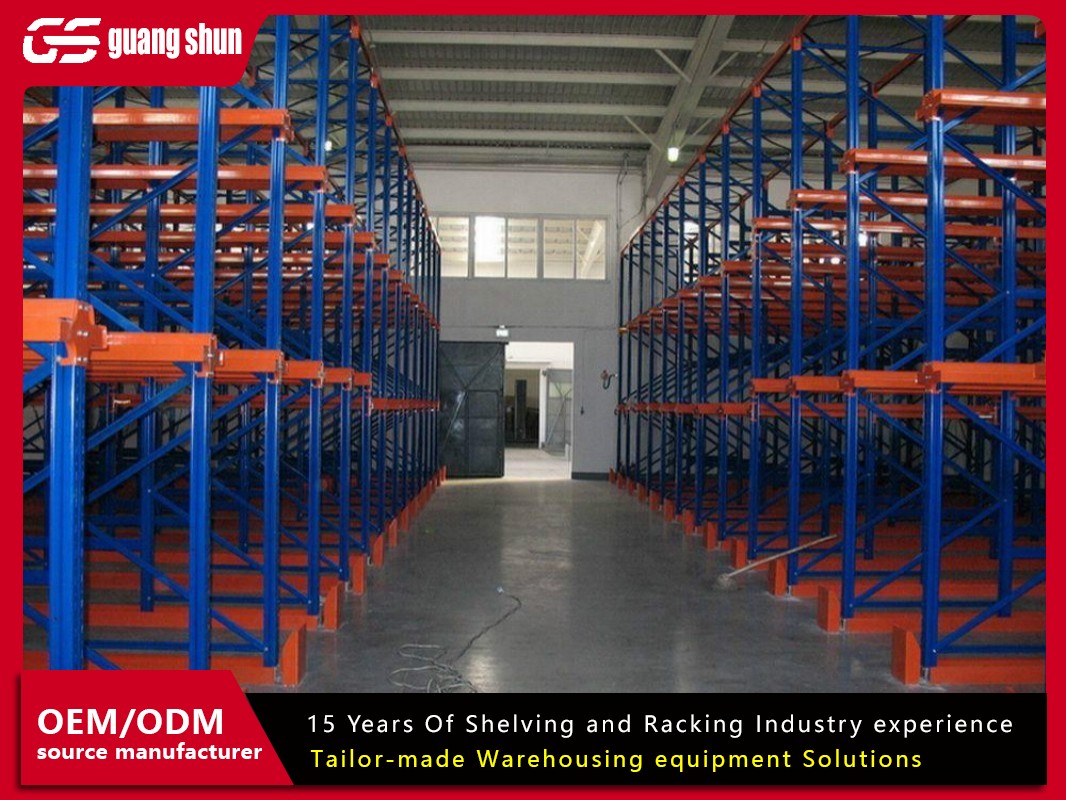In the relentless pursuit of warehouse efficiency and optimized storage, pallet racking stands as the fundamental backbone of modern logistics operations. These engineered structural systems provide the essential framework for storing goods palletized, enabling businesses to maximize vertical space, streamline inventory management, and enhance operational workflows. Understanding the nuances of pallet racking is critical for any operation looking to improve storage density, safety, and overall productivity. This comprehensive guide delves deep into the world of pallet racking, exploring its various types, core components, design principles, safety imperatives, and key selection factors.

What is Pallet Racking?
Pallet racking refers to a category of material handling storage systems specifically designed to store materials on pallets (or skids) in horizontal rows with multiple levels. Unlike simple shelving, pallet racking systems are engineered structures, typically constructed from high-strength steel, capable of supporting immense loads at significant heights. The primary function of any pallet racking system is to facilitate direct access to every pallet load stored within the system, although the degree of accessibility varies significantly depending on the specific type of racking chosen. By leveraging vertical cube space, pallet racking dramatically increases storage capacity compared to floor stacking alone, making it indispensable for warehouses, distribution centers, manufacturing plants, and retail backrooms worldwide.
Major Types of Pallet Racking Systems
The diversity of storage needs has led to the development of various pallet racking configurations. Selecting the right type is paramount for optimizing space, accessibility, and cost-effectiveness.
1.Selective Pallet Racking: The most common and versatile type. This pallet racking system features upright frames connected by load beams, creating individual bays where each pallet is accessible at any time (First-In, First-Out - FIFO). Its simplicity, full accessibility, and compatibility with most forklift types make it suitable for a vast array of SKUs with moderate to high turnover. While offering excellent selectivity, its storage density is lower than more compact systems.
2.Drive-In and Drive-Through Racking: Designed for high-density storage of homogeneous products with lower selectivity. In Drive-In pallet racking, forklifts drive directly into the rack structure lanes to place or retrieve pallets from the front to the back (Last-In, First-Out - LIFO). Drive-Through pallet racking allows access from both ends, enabling FIFO inventory rotation. This pallet racking type eliminates aisles between rows, significantly boosting storage density but requiring specialized forklifts and careful inventory management. Ideal for cold storage or bulk items with long-term storage.
3.Push-Back Pallet Racking: A popular high-density, LIFO system utilizing inclined carts on nested rails within each bay. Pallets are loaded from the front; each new pallet pushes the previous one(s) back along the rails. Retrieval is the reverse – removing the front pallet allows the next one to roll forward. This pallet racking system typically provides 2-6 pallet positions deep per lane and offers better selectivity than drive-in systems while maintaining good density.
4.Pallet Flow Racking (Dynamic Flow): A high-density, high-throughput FIFO system. Pallets are loaded onto an inclined track at the higher end and flow by gravity on wheel or roller conveyors towards the unloading end. This pallet racking system is ideal for high-volume operations with strict FIFO requirements (e.g., perishables, batch-managed goods). It minimizes handling time and reduces product damage but requires consistent pallet quality and significant initial investment.
5.Cantilever Racking: Although not strictly pallet racking in the traditional aisle-based sense, cantilever systems are crucial for storing long, bulky, or irregularly shaped items that don't fit standard pallet rack frames (e.g., lumber, piping, furniture, rolls). They feature vertical columns with projecting arms, providing unobstructed front access.

Key Components of a Pallet Racking System
Understanding the anatomy of pallet racking is essential for specification, safety, and maintenance:
1.Upright Frames: The vertical columns that form the backbone of the system. They consist of two vertical columns connected by horizontal and diagonal braces. Uprights come in various heights, thicknesses (gauge), and column profiles (e.g., teardrop, structural bolt-together) to handle different load capacities and seismic requirements. Base plates anchor the frames to the floor.
2.Load Beams: Horizontal members that span between upright frames, providing the support surface for pallets. They hook into the uprights via connectors (teardrop, structural bolts, clips). Beams are rated for specific uniform and point loads and come in depths and profiles matching the pallet size and load requirements. Safety clips or locks are critical to prevent accidental dislodgement.
3.Beam Connectors: The interface between the beam end and the upright frame. Common types include teardrop connectors (drop into punched holes), structural bolt-together connections, or welded tab connections. The type dictates adjustability and load capacity.
4.Wire Mesh Decking or Pallet Supports: While not always mandatory, decking is highly recommended for safety and stability. It provides a surface for pallets to sit on, prevents them from falling through, and acts as a fall protection barrier for workers. Options include wire mesh grids, steel sheets, or punched hole panels. Pallet supports (beam-mounted) are a minimal alternative but offer less protection.
5.Row Spacers and Braces: Used in back-to-back configurations to connect rows of racking, enhancing overall stability and rigidity. Diagonal and horizontal braces within the upright frame contribute significantly to structural integrity.
6.Shims: Used to level the racking system on uneven floors, ensuring proper load distribution and stability. Proper shimming is crucial for safety.
7.Guards and Column Protectors: Essential safety features. Post protectors (bollards, column guards) shield uprights from accidental forklift impacts. End-of-aisle guards protect racking at aisle openings. Guardrails are used on mezzanines or elevated walkways integrated with racking.
Design and Engineering Considerations for Pallet Racking
Implementing pallet racking is not simply about bolting frames together. It requires careful engineering:
1.Load Capacity and Application: The most critical factor. Engineers must calculate the Uniformly Distributed Load (UDL) and Point Load capacities required for each beam level based on the pallet weights and sizes. This determines the required upright gauge, beam profile, and connector type. Seismic activity in the region also influences design.
2.Layout Optimization: Maximizing storage density while maintaining operational efficiency involves analyzing SKU profiles, turnover rates (ABC analysis), and required accessibility. This determines the choice of rack type (selective vs. dense), aisle widths (dictated by forklift type - reach truck vs. counterbalance), and overall warehouse configuration (e.g., number of pick faces).
3.Building Constraints: Pallet racking design must integrate seamlessly with the warehouse building. Key considerations include clear ceiling height, floor flatness and load-bearing capacity, column spacing and locations, sprinkler system requirements (clearance around sprinkler heads is mandatory), lighting, and potential seismic codes. The rack system must be anchored securely to the floor.
4.Forklift Compatibility: The type of forklifts used (reach trucks, counterbalance trucks, order pickers) directly impacts the required aisle width and the overall height the racking can safely utilize. Clearance above the pallet and around beams is essential for safe operation.
5.Professional Design and Installation: Always utilize qualified pallet racking suppliers and engineers. They perform necessary calculations, create compliant layout drawings, and oversee proper installation according to industry standards (e.g., RMI - Rack Manufacturers Institute) and local building codes. DIY racking is extremely hazardous.
Safety Features and Best Practices for Pallet Racking
Safety is paramount in any warehouse, and pallet racking demands rigorous protocols:
1.Impact Protection: Forklift collisions are the leading cause of pallet racking damage and catastrophic failure. Mandatory use of post protectors (impact guards), end-of-aisle guards, and wheel guards significantly mitigates this risk. Encourage careful operator training and enforce speed limits.
2.Load Management: NEVER exceed the rated load capacities displayed on the load application and rack configuration (LARC) plates affixed to the rack. Ensure pallets are undamaged, correctly sized, and properly positioned on the beams. Avoid point loading (heavy items concentrated on a small area of the pallet). Distribute weight evenly.
3.Damage Inspection and Repair: Implement a strict, documented inspection program. Trained personnel should conduct regular visual inspections (daily/weekly by operators, monthly/quarterly by supervisors) and annual inspections by a qualified rack safety professional. Immediately tag and unload any damaged component (bent upright, beam, connector, base plate) and replace it with certified parts from the original manufacturer. Never attempt to straighten or weld damaged components.
4.Proper Use of Decking: Utilize appropriate decking for each level to prevent pallets or products from falling and to provide fall protection. Ensure decking is properly secured and rated for the loads.
5.Clear Aisles and Signage: Maintain clear, unobstructed aisles. Use clear signage indicating load limits, aisle designations, and safety warnings.
6.Worker Training: Comprehensive training for all personnel interacting with the pallet racking system – forklift operators, order pickers, supervisors – on safe operation, load handling, inspection procedures, and hazard recognition.
How to Choose the Right Pallet Racking System
Selecting the optimal pallet racking involves a thorough analysis of your specific needs:
1.Inventory Profile: What are the dimensions and weights of your palletized loads? How many SKUs do you have? What is the turnover rate (FIFO vs. LIFO suitability) for each?
2.Storage Density vs. Selectivity: Do you need immediate access to every pallet (high selectivity, lower density - Selective Racking), or can you prioritize maximizing pallet positions per square foot (high density, lower selectivity - Drive-In, Push-Back, Flow)?
3.Throughput Requirements: How quickly do goods move in and out? High-volume operations may benefit from flow racking, while slower-moving inventory might suit drive-in systems.
4.Forklift Equipment: What type of forklifts are you using or planning to use? This dictates minimum aisle width and impacts rack height feasibility. Reach trucks enable much narrower aisles than counterbalance trucks.
5.Budget Constraints: Consider both initial investment costs and long-term operational efficiency gains. Denser systems often have higher upfront costs but lower cost per pallet position. Factor in installation, potential building modifications (floor strengthening), and future expansion flexibility.
6.Future Scalability and Flexibility: Will your storage needs grow or change? Selective racking is generally the most adaptable. Consider systems that allow for easy reconfiguration or height adjustment.
7.Supplier Expertise and Support: Partner with a reputable pallet racking supplier known for quality manufacturing, certified engineering support, proper installation services, and reliable after-sales support for inspections and parts.
Pallet Racking Maintenance and Inspection
A proactive maintenance regime is non-negotiable for safe and long-lasting pallet racking:
1.Regular Inspection Schedule:Operational Checks (Daily/Weekly): Operators should visually scan for obvious damage (severe dents, bends, dislodged beams, leaning frames) before and after use in an aisle.Supervisory Inspections (Monthly/Quarterly): Designated personnel should conduct more thorough walk-downs using a checklist, examining uprights, beams, connectors, decking, anchors, and guards for any signs of damage, wear, or overload.Professional Inspections (Annually): Engage a qualified rack safety inspector (often provided by the supplier or third-party specialist) for a comprehensive assessment using tools to measure deflection and identify subtle damage.
2.Documentation: Maintain detailed records of all inspections, findings, actions taken (repairs, replacements), and LARC plates. This provides a history and demonstrates due diligence.
3.Immediate Action on Damage: Any identified damage must be addressed immediately. Tag the affected area as "Do Not Use," unload it safely, and replace damaged components only with manufacturer-certified parts. Never compromise on repairs.
4.Load Monitoring: Continuously ensure loads placed on the pallet racking do not exceed the rated capacities and are properly positioned.
5.Housekeeping: Keep the racking and surrounding areas clean and free of debris that could obscure damage or create hazards.
The Future of Pallet Racking
Pallet racking continues to evolve, integrating with technological advancements:
1.Integration with Automation: Modern pallet racking is designed to seamlessly interface with Automated Storage and Retrieval Systems (AS/RS), Automated Guided Vehicles (AGVs), and robotic palletizers/depalletizers. This demands extremely precise tolerances and robust engineering.
2.Advanced Materials and Design: Research into higher-strength steels and optimized structural designs allows for taller, denser racking systems capable of handling heavier loads with potentially lighter components.
3.Enhanced Safety Technology: Integration of IoT sensors to monitor rack deflection, impacts, or load imbalances in real-time is emerging, providing predictive maintenance alerts and enhanced safety data.
4.Sustainability Focus: Manufacturers increasingly use recycled steel and focus on designs that minimize material use without compromising strength. Denser racking also contributes to sustainability by reducing the warehouse footprint per pallet stored.
5.Modularity and Flexibility: The demand for easily reconfigurable and scalable pallet racking solutions continues to grow, supporting dynamic supply chains.
Pallet racking is far more than just metal shelves; it is a sophisticated, engineered solution critical to the efficiency, safety, and profitability of modern warehousing and logistics. From the ubiquitous selective rack to high-density drive-in and dynamic flow systems, understanding the types, components, engineering principles, and safety imperatives is essential for making informed decisions. Choosing the right pallet racking system, designed by professionals, installed correctly, and maintained rigorously through a robust inspection program, provides the foundation for optimized storage, streamlined operations, and a safe working environment. As technology advances, pallet racking will continue to adapt, integrating deeper into automated logistics ecosystems while maintaining its core function: efficiently and safely storing the goods that drive the global economy. Investing wisely in the right pallet racking solution is an investment in the future success of your warehouse operations.







